Xu, H., et al., PTMD: A Database of Human Disease-associated Post-translational Modifications, Genomics Proteomics Bioinformatics. 2018 Aug;16(4):244-251. doi: 10.1016/j.gpb.2018.06.004
Relationships between PTMs and disease, classified into 6 classes:
Dot size in the table (left) represents the number of PTM disease associated events:
Upregulation (U): the PTM level is upregulated in diseases.
Down-regulation (D): the PTM level is down-regulated in diseases.
Presence (P): the presence of a PTM event is associated with disease progression.
Absence (A): the absence of a PTM event is involved in disease progression.
Creation (C): a mutation event (single amino acid or indel mutations) creates one or multiple PTM sites or increases the protein PTM level in diseases.
Disruption (N): a mutation event that dis-rupts one or multiple PTM sites or reduces the protein PTM levels in diseases.
Types U and D focuses on the changes of PTM levels in disease tissue as compared to normal tissues
Types P and A shows whether presence or absence of a PTM event is associated with disease progression.
Types C and N relates to mutation driven PTM events in disease.
